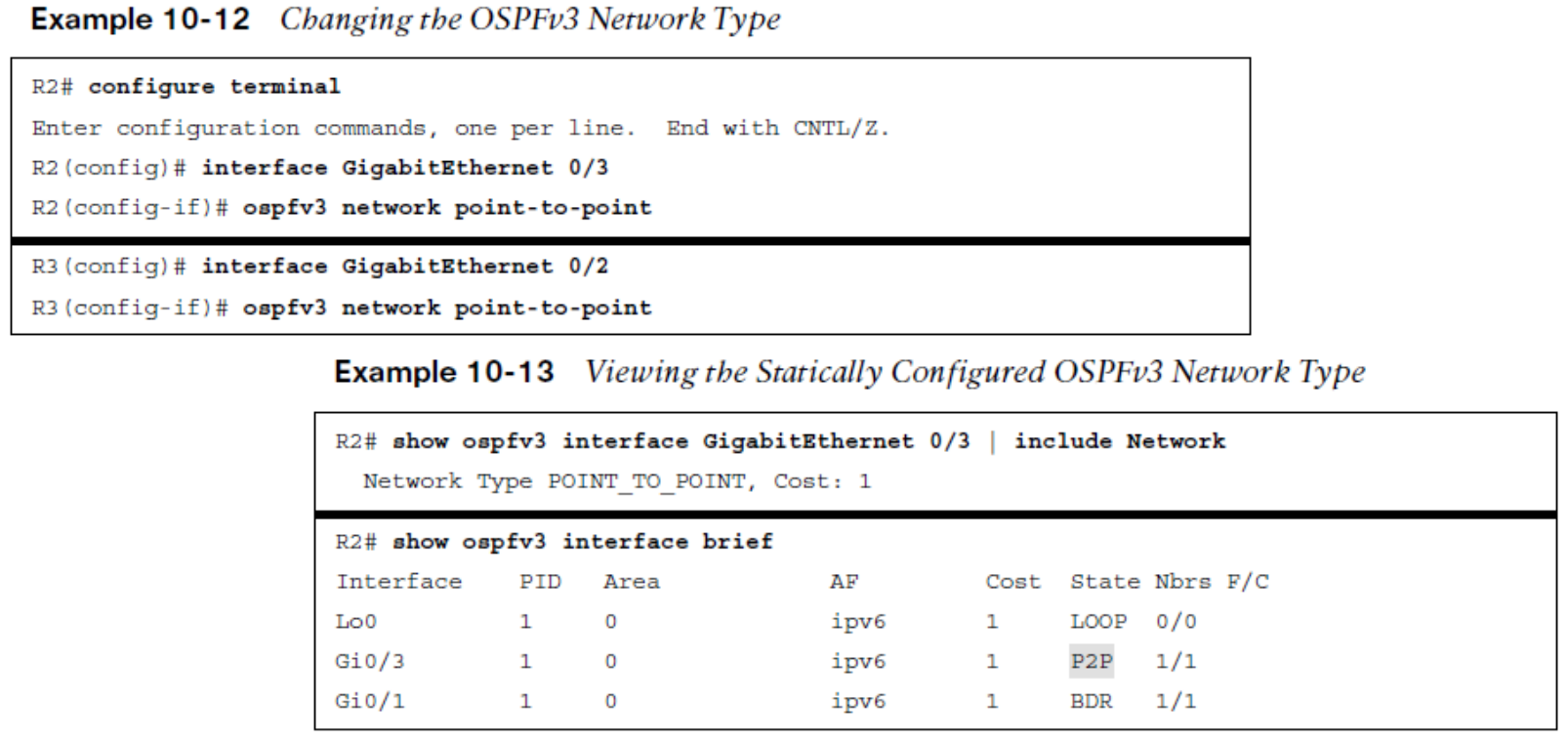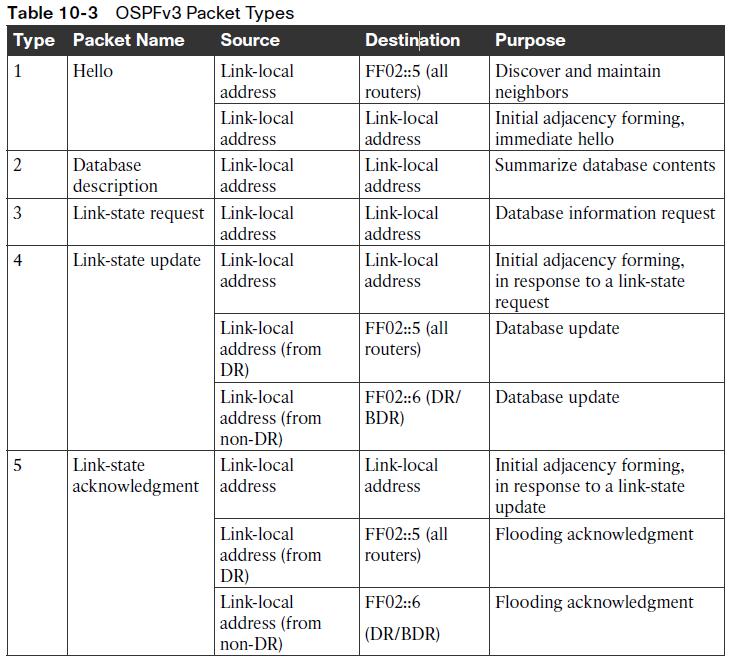
About Lesson
OSPFv3 Fundamentals
an overview of the OSPFv3 routing protocol and the similarities to OSPFv2.
- OSPFv3 supports IPv4 and IPv6 address families.
- New LSA types have been created to carry IPv6 prefixes.
- The IP prefix information is carried as LSA payload information, making the protocol essentially address family independent.
- Includes a new link-state type field that is used to determine the flooding scope of LSA, as well as the handling of unknown LSA types.
- OSPFv3 runs directly over IPv6, and the number of fields in the packet header has been reduced.
Features
- Router ID – The router ID is used to identify neighbors, regardless of the network type in OSPFv3. The router ID must always be manually assigned in the routing process.
- Authentication – Neighbor authentication has been removed from the OSPF protocol and is now performed through IPsec extension headers in the IPv6 packet.
- Neighbor adjacencies – OSPFv3 inter-router communication is handled by IPv6 link-local addressing.
- Multiple subnets on an interface – Allows for neighbor adjacency to form even if the two routers do not share a common subnet.
- Multiple instances – OSPFv3 packets include an instance ID field that may be used to manipulate which routers on a network segment are allowed to form adjacencies.
OSPFv3 Link-State Advertisement
- OSPFv3 packets use protocol ID 89.
- Routers communicate with each other using the link-local address.
- OSPFv3 modifies the structure of the router LSA (type 1).
- It renames the network summary LSA to the interarea prefix LSA.
- It renames the ASBR summary LSA to the interarea router LSA.
- Router LSA is responsible for announcing interface parameters such as the interface type and metric.
- IP address information is advertised independently by two new LSA types:
- Intra-area prefix LSA
- Link-local LSA
- Link-state database(LSDB) creates a shortest path topology tree based on links instead of networks. Since IP address information is advertised using new LSA types there is no longer a need to run SPF calculations every time a new address prefix is added or changed on an interface.
| LS Type | Name | Description |
| 0x2001 | Router | Every router generates router LSAs that describe the state and cost of the router’s interfaces to thearea. |
| 0x2002 | Network | A designated router generates network LSAs to announce all of the routers attached to the link,including itself. |
| 0x2003 | Interarea Prefix | Area border routers generate interarea prefix LSAs to describe routes to IPv6 address prefixes thatbelong to other areas. |
| 0x2004 | Interarea router | Area border routers generate interarea router LSAs to announce the addresses of autonomoussystem boundary routers in other areas. |
| 0x4005 | AS external | Autonomous system boundary routers advertise AS external LSAs to announce default routes orroutes learned through redistribution from other protocols. |
| 0x2007 | NSSA | Autonomous system boundary routers that are located in a not-so-stubby area advertise NSSA LSAsfor routes redistributed into the area. |
| 0x0008 | Link | The link LSA maps all of the global unicast address prefixes associated with an interface to the link-local interface IP address of the router. The link LSA is shared only between neighbors on the samelink. |
| 0x2009 | Intra-area prefix | The intra-area prefix LSA is used to advertise one or more IPv6 prefixes that are associated with arouter, stub, or transit network segment. |
OSPFv3 Communication
Destination address is either a unicast link-local address or a multicast link-local scoped address: FF02::05: OSPFv3 AllSPFRouters
- Every router uses AllSPFRouters multicast address to send OSPF hello messages to routers on the same link.
- Hello messages are used for neighbor discovery and detecting whether a neighbor relationship is down. DR and BDR routers also use this address to send link-state update and flooding acknowledgment messages to all routers.
FF02::06: OSPFv3 AllDRouters designated router (DR)
- Non-DR/BDR routers send an update or link-state acknowledgment message to the DR and BDR by using the AllDRouters.
- OSPFv3 uses the same five packet types and logic as OSPFv2.
OSPFv3 Packet Types
 Other useful information:
Other useful information:
Join the conversation